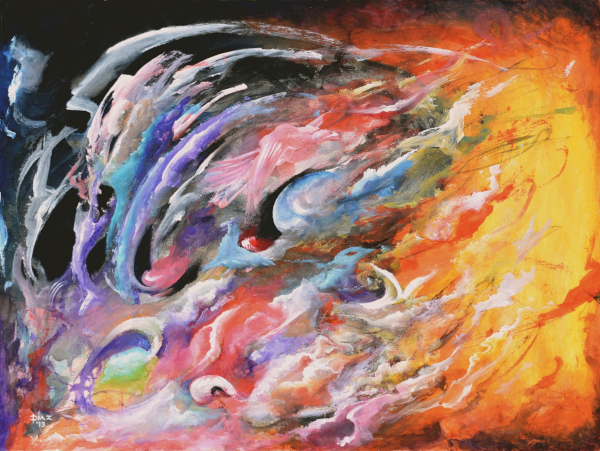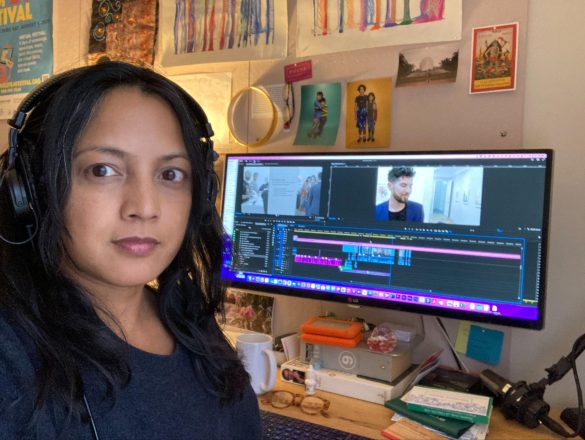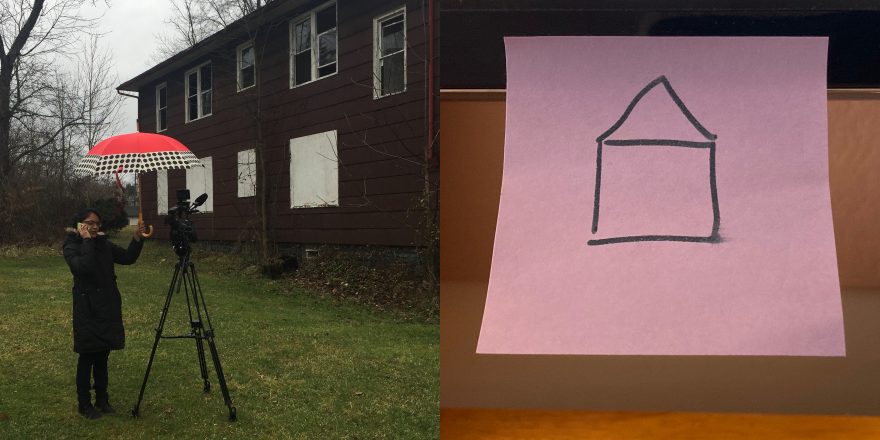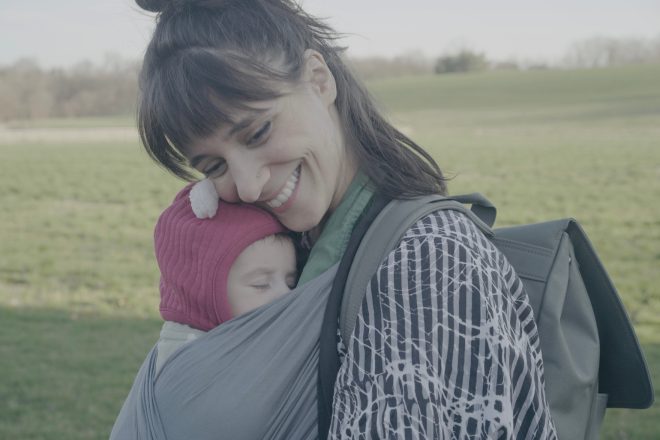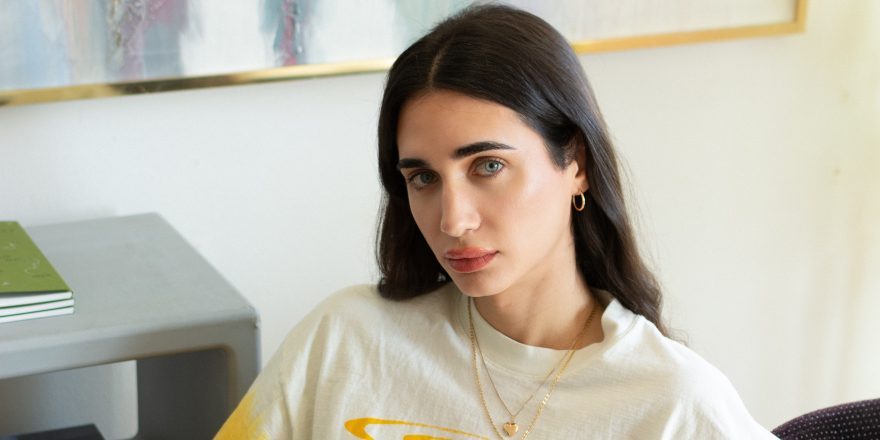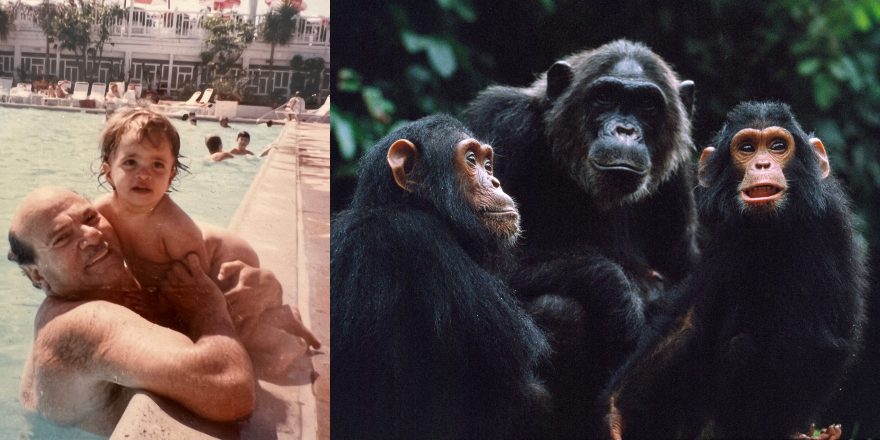Whenever I get stuck, my eyes instinctively wander up above my computer monitor to my bulletin board which is plastered with little odds and ends, photos, postcards and quotes I’ve collected over the years: a sketch of a house (see my first Talkhouse essay), a Sun Ra album cover, photos of my kids, a copy of a 1965 Time magazine cover with Bill Moyers (my former boss), a gold rim from a gallon of Blue Bell Ice Cream. Each holds a lesson, an inspiration, a reminder that it will all be OK.
As I was editing my latest film, a short documentary called Love, Jamie, I often found myself looking up for some guidance or a flash of inspiration. The film is about a trans woman and artist named Jamie Diaz who was incarcerated in Texas. (It won the Grand Jury Prize at its world premiere at OUTFEST and is currently streaming on PBS American Masters Shorts.) As all films do, Love, Jamie presented its own unique set of challenges, a different puzzle to solve and path to find. Here are a few instances where my bulletin board helped me along the way.
—-//—-
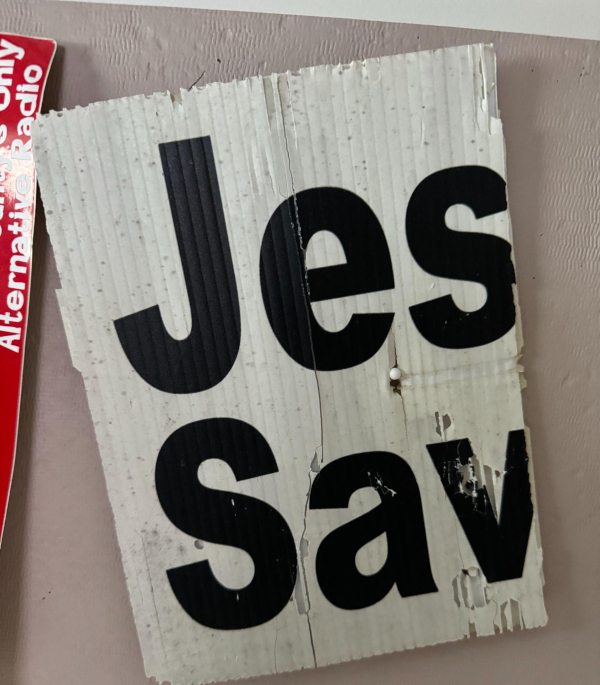
I often wondered, just how much do we need to explain in the film? I come from a news background where the tendency is to overexplain in the name of clarity. In Love, Jamie, we chronicle a 10-year friendship Jamie has with Gabriel, who is on the outside and is also trans. For many in the trans community, the use of deadnames (the names they used before their transition) can be very painful. After discussing it with both Jamie and Gabriel, we decided to never address their deadnames outwardly, but have them appear subtly in the letters they shared with each other during the time in which they were both transitioning. But I wondered, would the audience pick up on this? There was also an issue of how much we talk about the abuse Jamie suffered in prison. We worried that if we went into too much detail, it could potentially impact her chance at parole. Here’s where the sign comes in. Most people immediately know what it says based on just those few letters. The lesson here? Trust your audience. Give them just enough, and they will get it.
—-//—-
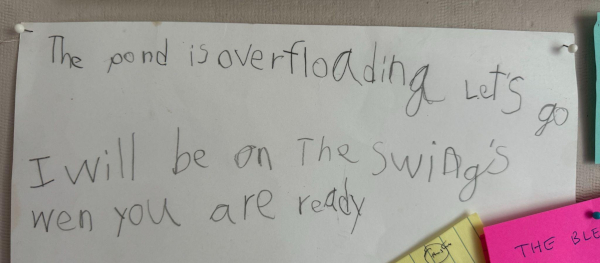
Andrew had heard about Jamie from Daniel Cooney, a gallery owner who is also featured in the film, and he shared the basic elements of her story with me. I looked at her art and thought it was incredible, especially given the circumstances she was creating it in, using whatever supplies were available to her, including leftover paint used on the prison walls and brushes she made out of hair. But I wasn’t sure there was a film to be made. Then we read one of her letters, and I was so struck by her words, her compassion, her voice. That’s when I thought, Maybe this could be a film! We immediately started pursuing the idea of a short documentary, not knowing exactly how we would fund it or where it would get seen. But I knew in my gut, we had to at least try. So, when you get a sign that says, “The pond is overfloading,” you gotta go check it out!
—-//—-
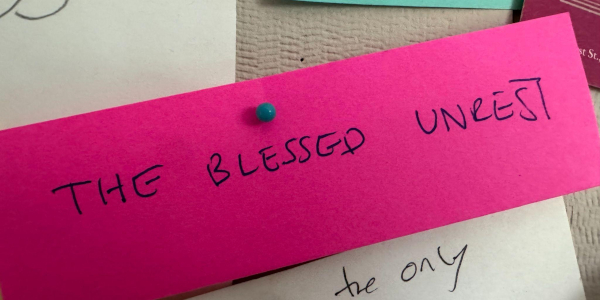
The phrase “The blessed unrest” was originally used by the modern dancer and choreographer Martha Graham to describe the creative process and the journey of the artist. So, when I was wading through hours of phone calls between Jamie and Gabriel, looking for that special crack of tenderness in their voice that conveys so much more than the words they’re speaking, sitting in that uncomfortable space where you know a scene isn’t working but you don’t know how to fix it just yet, feeling mentally and physically exhausted from sitting at my computer for days on end, my gaze would wander up to this phrase. And I would remember, this is all part of the process, the necessary hard stuff, and it is a gift to do this work.
—-//—-
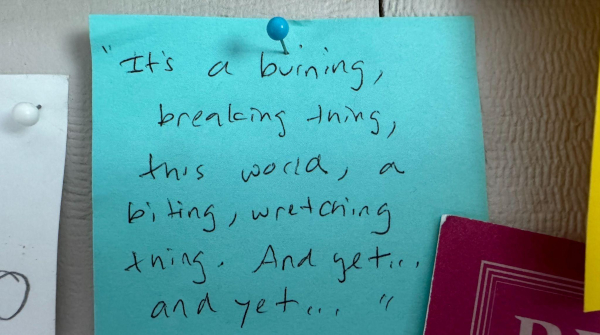
Prison is a kind of horror. Jamie had been serving a life sentence, with a chance of parole after 30 years, for committing robberies to feed a drug addiction. Summers in Texas are brutal and Jamie’s cell would often reach 120 degrees. At another point, she was moved to a cell that had no windows. She told me she hadn’t been outside or seen the sun in months. Another time, Jamie had been harassed and assaulted and was moved into solitary confinement for her safety, because that was the only option. “It’s a burning, breaking thing, this world, a biting, wretching thing. And yet … and yet …” And yet, Jamie created the most beautiful and joyful art, filled with birds and light and humor and flowers and pride and love.
Getting to know Jamie and making this film about her has been such an honor. And now, one of her paintings has found its place on my bulletin board, a reminder that beauty can be found in the most unexpected places.
